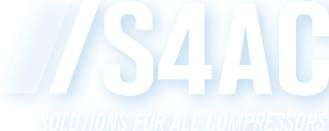
When installing a new system, or updating an existing one, having a clear idea of all the costs involved from 1st day through to the moment it needs replacing will avoid unexpected financial surprises throughout its lifespan.
The initial outlay for a compressed air system is only the first cost consideration. Perhaps not the most important. The true Total Cost Of Ownership (TCO) includes the expected cost projections for maintenance, parts and servicing. A further cost to consider and avoid is production halts due to system failure, so it’s critical to possess the full picture and understand all the possible monetary implications that TCO involves.
Cost areas to consider with a compressed air system
- Capital cost: Initial consultation and design, pre-purchasing, pipeline, purchase and installation, repayment or rental cost.
- Energy efficiency: Electricity and fuel costs to run and heat or cool the compressor.
- Maintenance costs: Servicing and aftercare, parts, labour costs (i.e. fitter’s and operators wages), lubrication, oil costs (cooling, oil filters, oil changes ).
- Oil disposal, storage and associated costs.
- Cost of downtime: Fixed maintenance breaks, unexpected failure or leaks which lead to production being halted and employees being left with very little work to do.
- Breakdown costs (non-contract parts & labour).
The energy element
A primary expenditure throughout a compressed air system’s lifespan, as well as an environmental factor, is the associated energy cost and output. This can be managed better with Energy Management Systems, which can bring about substantial energy savings.
The high percentage of energy which is converted into heat during air compression does not need to go unused. Up to 90% of heat generated in an air compressor can be recovered and used in a different part of the plant for another purpose, such as hot water. Please contact us if you are interested in installing an external heat recovery system which can recover up to 75 percent of the electrical power, thus reducing utility bills as well as environmental impact.
The need for maintenance
Importance of a fixed maintenance plan. Sufficient maintenance and aftercare will reduce the chance of expensive problems down the line. Without proper management, there can be both oil and air leaks which can be expensive. Regular maintenance ensures that the system is being as cost and energy efficient as possible. A fixed maintenance plan (meaning components being checked, fixed, serviced or replaced after a certain amount of time) in partnership with a robust and experienced aftercare partner, has proven to be the more cost-effective and reliable across the lifespan of a compressed air system.
